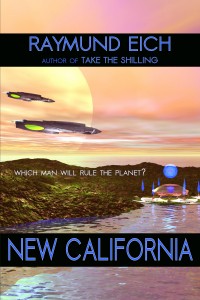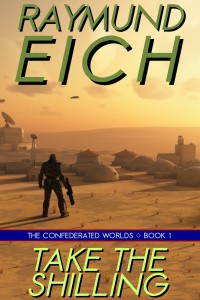Since my last post on religion and space settlement, a number of people have asked me which of my books touch on those subjects. Time to gather those responses in one place.
 Desmond Park, the protagonist of New California, invents a religious-like movement, the “TranscenDNA Society,” which promises liberation from some of the urges built into our brains by evolution (the “selfish gene”). Unlike most past religious movements making the same promise, which were limited to crude and clumsy psychological techniques (prayer, social pressure, etc.), Desmond fulfils it through brain implants dispensing neuroactive drugs.
Desmond Park, the protagonist of New California, invents a religious-like movement, the “TranscenDNA Society,” which promises liberation from some of the urges built into our brains by evolution (the “selfish gene”). Unlike most past religious movements making the same promise, which were limited to crude and clumsy psychological techniques (prayer, social pressure, etc.), Desmond fulfils it through brain implants dispensing neuroactive drugs.
The Confederated Worlds were settled by religious communities who used slower-than-light ships to cross interstellar distances to find terraformable planets. (Aside–a background assumption of the series is the chokepoint in the Drake Equation is f_l, fraction of planets on which life emerges). Some of those religious communities are traditional (Presbyterians, Lutherans). Some are fanatic splinters of established religions (the “Transtellar Union for Traditional Progressive Judaism” comes to mind, as does a world not yet described on paper, New Nauvoo). Some are conscious revivals of past religions (pre-Islamic Arab paganism, the Troth of Midgard). And some are not “religions” at all, but visions of ethny, culture, or ideology–among them Garvey’s World, Zion-against-Babylon, and Challenger.
The first two books in the series take place on worlds of the latter sort. The fighting depicted  in Take the Shilling occurs on New Liberty. The religious beliefs of the locals are captured well in this passage.
in Take the Shilling occurs on New Liberty. The religious beliefs of the locals are captured well in this passage.
Except for intersecting streets, buildings fronted the square. In the middle of one side, lit by [the local sun’s] rays, a mural covered a six-meter-high wall. It showed a human shape, probably male, dressed in a puffy white vacuum suit with a gold reflective face shield on its helmet. The man stood on a gray, pitted, lifeless plain, under a black sky, next to a rigid sheet on a pole. The sheet looked a little like the Confederated Worlds flag, except the white stars stood on a rectangular, not circular, blue field, in the upper left, not the center, and the red and white bands ran horizontally instead of radiating outward.
The man in the vacuum suit was not alone. The bust of another man floated in ghostly outline in the black sky behind the suited one. The ghostly figure featured narrow eyes and wavy hair in front of a nimbus of light. He gazed with serene confidence on the man in the vacuum suit.
“Is that a saint?” Obermeyer asked.
“He’s a president,” Tomas said. “Don’t you read any briefings about the [locals]?”
“I don’t have to. I’ve got you for that.” Obermeyer laughed.
“Fine. I won’t answer your question.” Tomas took a couple of steps away and stretched his arms overhead. A clock tower a few hundred meters away, in the direction of the college, sounded the local hour.
Obermeyer paced over. “What do you mean, you won’t answer? You said he’s a president. That means he isn’t a saint.”
“Can’t the [locals] think he’s both?”
Obermeyer frowned, then shook his head. “On Challenger we respect the ancient presidents, but we don’t worship them.”
Tomas said nothing. Marchbanks squinted at the mural. “Obermeyer, d’you think we’re on Challenger?”
The second book, Operation Iago, is set on Arden, a world where the dominant scripture is the  works of William Shakespeare. (Subscribers to my mailing list already know that).
works of William Shakespeare. (Subscribers to my mailing list already know that).
 My forthcoming short novel, The ALECS Quartet, is about missionaries to aliens. (“ALECS” is a backronym for “Apostolic League of Earth Communities of Spirit”). ALECS provides common infrastructure shared by multiple religions/spiritual traditions/ideologies: Christians, atheists, North American neo-Taoists, and good government true believers, among many others. But despite their spiritual dedications, these missionaries are quite capable of sex and violence…
My forthcoming short novel, The ALECS Quartet, is about missionaries to aliens. (“ALECS” is a backronym for “Apostolic League of Earth Communities of Spirit”). ALECS provides common infrastructure shared by multiple religions/spiritual traditions/ideologies: Christians, atheists, North American neo-Taoists, and good government true believers, among many others. But despite their spiritual dedications, these missionaries are quite capable of sex and violence…